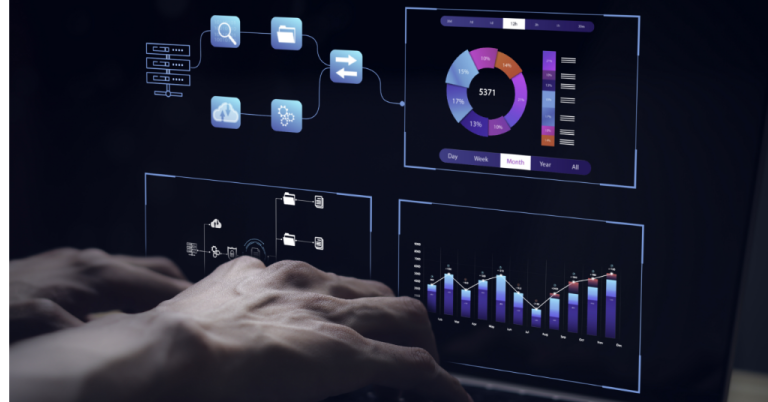In a rapidly evolving technological landscape, businesses must remain agile and adaptive to maintain a competitive edge. Surprisingly, many enterprises continue to grapple with outdated legacy systems. These relics from the past not only impede progress and innovation but also create obstacles to seamless collaboration in an increasingly interconnected world. A staggering 79% of organizations, as reported by a survey conducted by 2nd Watch, find that these legacy applications hinder their digital transformation efforts.
The current landscape is evolving, underscoring the growing necessity to embrace modern, cloud-based solutions. It is becoming increasingly evident that maintaining antiquated infrastructures is not only costly but also diverts resources away from innovation and growth initiatives. Therefore, it is imperative to make the transition from legacy systems to advanced, cloud-based alternatives such as Microsoft 365 (formerly Office 365).
In this blog post, our objective is to emphasize the benefits of migrating from outdated legacy systems to Microsoft 365, a robust suite of cloud-based solutions. By opting for this migration, businesses can successfully execute tenant-to-tenant transfers, streamline their operations, encourage effective collaboration, and ultimately flourish in the digital era.
Table of Contents
Why businesses should consider migrating from legacy systems
Transitioning from outdated technology to Microsoft 365 presents a compelling opportunity for businesses to address numerous challenges typically associated with legacy systems, including:
- Limited Functionality: Legacy systems often lack the advanced features required to meet modern business demands.
- Lack of Support: Outdated systems may no longer receive essential maintenance and support, leaving businesses vulnerable to issues.
- Compatibility Issues: Legacy systems can struggle to integrate with contemporary software and technologies.
- Security Vulnerabilities: Aging systems often have unpatched vulnerabilities, making them susceptible to cybersecurity threats.
- High Maintenance Costs: Maintaining and upgrading legacy systems can be prohibitively expensive.
These challenges can significantly hinder a company’s adaptability and growth potential.
However, by embracing Microsoft 365’s cloud-based solutions, businesses gain access to a comprehensive suite of modern features that enhance agility, scalability, and flexibility. These solutions offer a sturdy foundation for real-time collaboration, seamless integration with other tools, streamlined operations, automated updates, increased productivity, and the ability to remain competitive in today’s rapidly evolving market.
Furthermore, as technology continues to advance at a rapid pace, it becomes increasingly crucial for businesses to move away from obsolete legacy systems and transition to modern, cloud-based solutions like Microsoft 365 to harness the full spectrum of advantages they offer.
Benefits of legacy system migration to Microsoft 365
Efficient Collaboration and Enhanced Productivity:
The transition to Microsoft 365 equips organizations with a consolidated platform that eliminates communication obstacles and optimizes collaborative efforts. Utilizing familiar tools like Microsoft Teams, SharePoint, and OneDrive, employees can effortlessly collaborate across different departments and geographic locations. This results in heightened productivity and operational efficiency.
Advanced Data Security and Regulatory Compliance:
Microsoft 365 (formerly Office 365) provides robust security capabilities and compliance tools to safeguard sensitive data and guarantee compliance with regulatory mandates. Through the consolidation of data governance via tenant-to-tenant migration, businesses can establish uniform security protocols and maintain authoritative oversight of vital information.
Cost-Efficiency and Streamlined IT Administration:
Shifting from legacy on-premises systems to Microsoft 365’s cloud-based infrastructure yields significant cost savings. The elimination of hardware maintenance and decreased IT management burdens enable IT teams to redirect their efforts towards strategic endeavors, freeing them from routine maintenance duties.
Harnessing Advanced Analytics and Business Intelligence:
Within Microsoft 365, integrated tools like Power BI, MS Fabric, and Microsoft 365 Analytics offer potent data visualization and analysis capabilities. These tools empower organizations to extract valuable insights from their data, utilizing the power of artificial intelligence (AI) to facilitate data-driven decision-making at all organizational levels.
Effortless Mobile and Remote Work Empowerment:
In the contemporary mobile workforce environment, Microsoft 365 enables smooth access to documents and applications regardless of location or device. This empowers employees to maintain productivity while working remotely, fostering organizational agility and flexibility.
Uninterrupted Updates and Ongoing Innovation:
Microsoft 365 guarantees automatic delivery of the latest updates and feature enhancements, granting access to state-of-the-art tools and technologies without incurring additional expenses or interruptions. This consistent stream of innovation positions organizations at the forefront of the digital transformation journey.
Unified and Streamlined Work Environment:
Through tenant-to-tenant migration, businesses can merge multiple Microsoft 365 tenants into a singular, cohesive environment. This integration promotes enhanced cross-team collaboration, standardizes workflows, and simplifies management, culminating in an optimized and unified work ecosystem.
Incorporating Microsoft Viva and Fabric:
Through the adoption of Microsoft 365, organizations can tap into the capabilities of Microsoft Viva and Fabric. Microsoft Viva serves as a platform that enhances employee engagement, well-being, and productivity. It seamlessly integrates with Microsoft Teams, providing easy access to learning resources, employee data, and communication channels. Meanwhile, Microsoft Fabric’s objective is to unify and streamline various elements of data analytics, encompassing computing, storage, analytics stack, governance, and business models, into a cohesive solution.
Given the remarkable advantages that await, it becomes imperative for businesses to embark on a well-structured approach to successfully transition into the realm of Microsoft 365.
How to strategize a successful M365 migration process
Conduct a Comprehensive Evaluation:
Execute a meticulous assessment of current systems, applications, and data to gain a profound understanding of the organization’s unique requirements and goals. Recognize both potential obstacles and avenues for enhancement that can be tackled during the migration process.
Craft an Elaborate Migration Strategy:
Establish a detailed migration plan encompassing a systematic roadmap, clear timelines, and allocation of resources. Design contingency measures to effectively address any unforeseen challenges that might surface throughout the migration journey.
Engage Key Stakeholders:
Involve decision-makers and crucial stakeholders at every stage of planning and execution. Solicit their endorsement and alignment to guarantee the migration’s success while securing the essential resources for a seamless transition.
Efficient Communication and Training:
Convey the advantages of Microsoft 365 to all staff, emphasizing how it enhances productivity and collaboration. Deliver extensive training sessions or interactive workshops to equip the workforce with the knowledge and proficiency required for effective utilization of Microsoft 365, incorporating the Viva app.
Data Migration and Application Integration:
Collaborate closely with the IT team or a reputable technology partner to perform data migration from legacy systems to Microsoft 365. Guarantee the smooth integration of vital applications and services into the new environment.
User Provisioning and Rigorous Testing:
Establish user accounts and grant access permissions to pertinent Microsoft 365 services according to employees’ roles and duties. Execute thorough testing and continuous monitoring throughout the implementation phase to detect and address any compatibility concerns.
User Adoption and Change Management:
Give paramount importance to user adoption and the implementation of change management strategies to facilitate a smooth transition for employees. Emphasize the advantages of Microsoft 365 and address any apprehensions or resistance through transparent communication and dedicated support.
Ongoing Monitoring and Assessment:
Continuously assess the migration’s effectiveness post-implementation, measuring its influence on productivity, collaboration, and security. Analyze user feedback and pinpoint areas for enhancement to secure the enduring success of Microsoft 365.
Sustained Enhancement and Innovation:
Foster a culture of continuous learning and exploration regarding the features and capabilities of Microsoft 365 to unlock its full potential. Stay informed about Microsoft’s latest enhancements and updates to perpetually enhance your organization’s productivity and efficiency.
Drive Change with Digital Transformation
Transitioning from legacy systems to Microsoft 365 is a strategic decision that empowers businesses to harness the potential of cutting-edge cloud-based solutions. By surmounting the hurdles posed by legacy systems, companies can tap into the advantages of cloud migration, elevating productivity, optimizing operations, and positioning themselves for enduring success in the digital era. If you seek a trusted Microsoft partner to meticulously plan, execute, and devise user adoption strategies for your transition to Microsoft 365, our team of MS experts is here to assist you.













